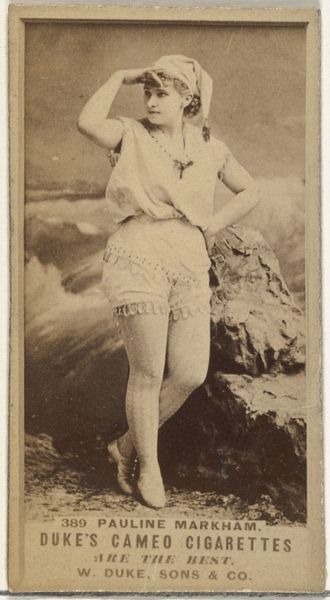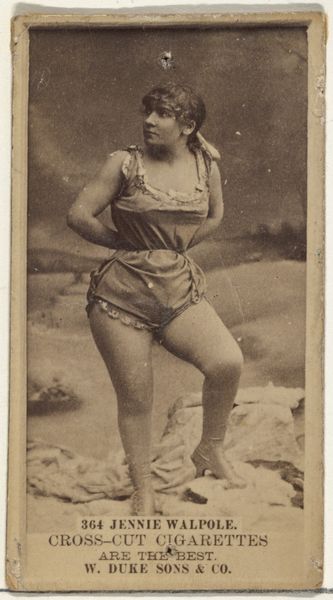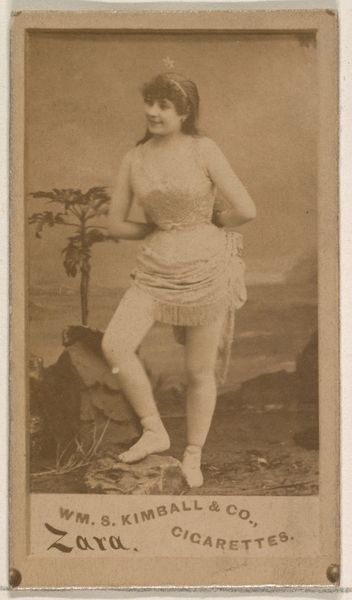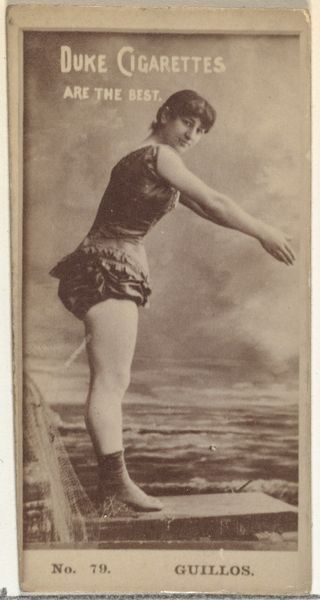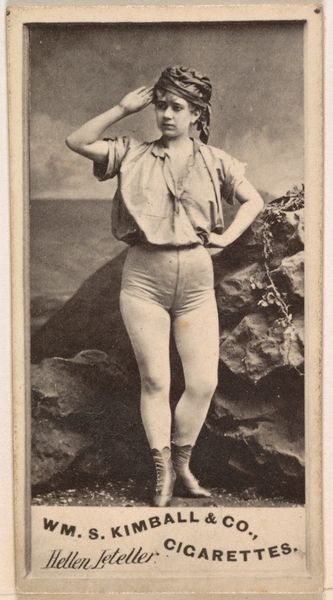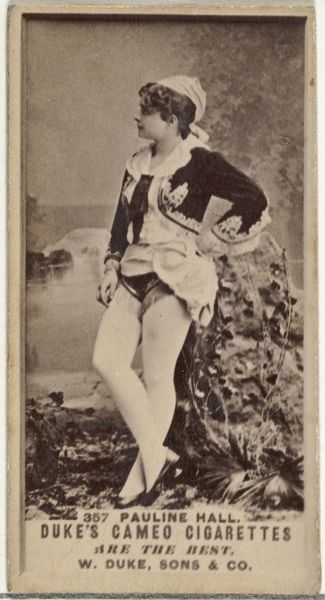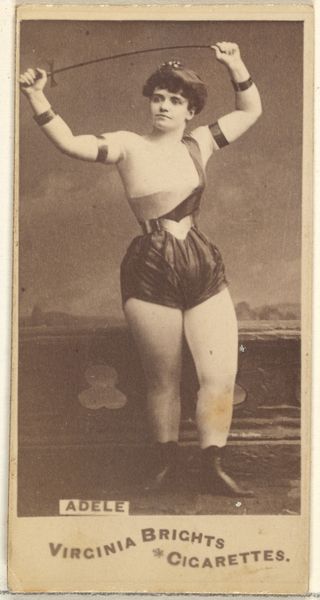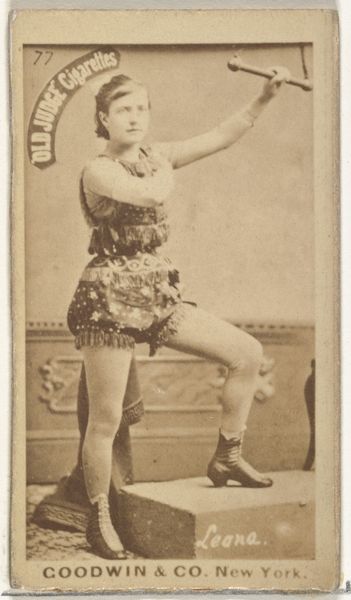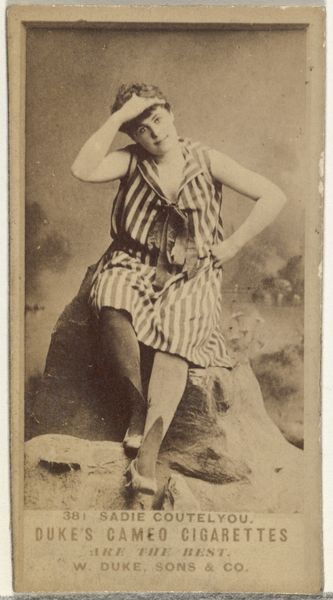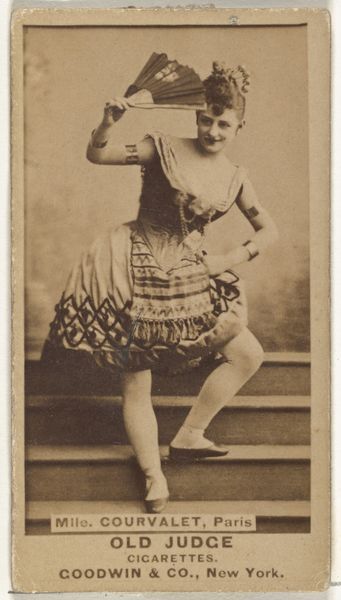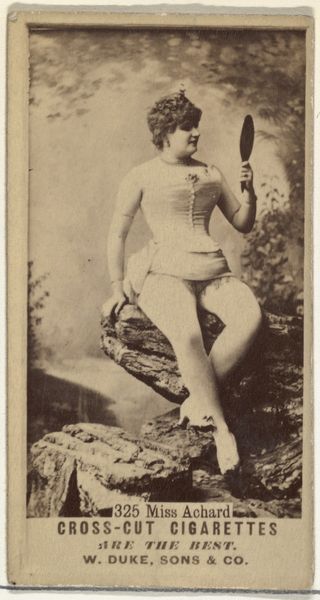
Card Number 223, Mlle. Hartwig, from the Actors and Actresses series (N145-3) issued by Duke Sons & Co. to promote Cross Cut Cigarettes 1880s
0:00
0:00
print, photography
#
portrait
# print
#
impressionism
#
photography
#
19th century
#
genre-painting
Dimensions: Sheet: 2 11/16 × 1 3/8 in. (6.8 × 3.5 cm)
Copyright: Public Domain
Editor: Here we have “Card Number 223, Mlle. Hartwig,” a photographic print from the 1880s by W. Duke, Sons & Co., originally a cigarette card. There's a certain charm to the image, but also something that feels staged about it, like it’s trying to project a specific ideal of femininity. What do you see when you look at this piece? Curator: I see a powerful collision of commerce and representation. This wasn't just a portrait; it was a carefully constructed image designed to sell cigarettes. Think about the power dynamics at play. Here's Mlle. Hartwig, likely an actress, her image used to entice consumers. How much agency did she truly have in how she was portrayed? And what message was this sending to the consumer, likely a man, about women and their roles? Editor: So, it's less about the individual and more about the societal message it's conveying? Curator: Exactly! We must consider that these images shaped perceptions. The actress, in her bathing costume, is objectified, transformed into a commodity herself. It contributes to a culture of seeing women as primarily objects of desire and consumption. It's critical to understand the historical context and how these seemingly harmless images were actually tools in perpetuating certain power structures. Does it change your perception knowing the original purpose of the image? Editor: It really does. It's unsettling to think about how easily these images normalized those ideas back then. Curator: Precisely. Recognizing that commercial imagery contributes to shaping norms—regarding gender, race, and class—is crucial for any meaningful study of art history. These cards, mass-produced and widely distributed, became instruments of cultural influence. Editor: This definitely gave me a lot to consider. I now see how important it is to think about the societal context, the motivation behind the image, when trying to understand an artwork like this.
Comments
No comments
Be the first to comment and join the conversation on the ultimate creative platform.
